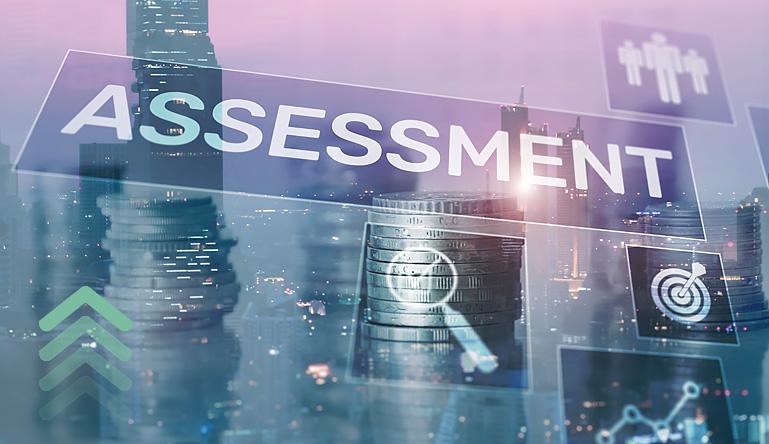-
 Vice President of Product Management, Catalis Tax & CAMA
Vice President of Product Management, Catalis Tax & CAMAWith extensive experience leading full lifecycle software projects, he specializes in delivering successful outcomes for government agencies.
View all posts
Eliminating errors with consistent data and streamlined processes
Accurate property valuations are the cornerstone of fair and equitable taxation. Yet in many jurisdictions, the assessment process is still burdened by inconsistencies, manual entry errors, and fragmented historical records. These issues don’t just affect internal operations; they can undermine taxpayer trust and lead to disputes, appeals, and lost revenue.
For counties and cities seeking better results, modern mass appraisal services for local government now include digital tools like assessment e-filing platforms that enforce standardized processes, reduce human error, and improve consistency. By moving beyond paper-based processes, these tools help jurisdictions apply consistent valuation models, retain filing history across years, and build confidence in fair outcomes.
From Inconsistency to Standardization
Traditional property tax filings, particularly for business personal property, often rely on printed forms, inconsistent spreadsheets, or scanned PDFs. These inputs are then manually entered into internal systems, with varying interpretations of depreciation rules, asset classifications, and valuation methods.
Even experienced teams can introduce discrepancies that affect fairness and accuracy. Without standardized logic, two similar businesses may be taxed differently due to small differences in formatting, calculations, or interpretations.
Assessment e-filing solutions support IAAO-compliant mass appraisal services by applying consistent logic at the point of data entry. When filers use an online portal, built-in validations ensure depreciation is applied according to jurisdictional standards, and asset classifications are handled uniformly. These platforms act as data-driven mass appraisal solutions for municipalities, minimizing subjectivity and aligning each filing with your official policies.
Building Confidence with Historical Filing Retention
Many errors in valuation stem from missing context. When prior filings are stored in paper folders or disparate systems, it’s difficult to track changes, spot discrepancies, or validate data over time.
Digital e-filing systems provide automatic historical data retention, empowering staff to quickly review prior year filings, compare reported assets, and flag anomalies. This continuity supports contract appraisal services for local governments by enhancing audit trails, speeding reviews, and supporting appeals or compliance checks.
For jurisdictions conducting assessment ratio studies and compliance audits, having reliable historical data ensures consistency and supports fair taxation practices across tax cycles.
Key Features That Improve Valuation Accuracy
To deliver the most benefit, jurisdictions should seek tools that align with industry best practices and provide the following features:
- Standardized Depreciation Logic: Built-in rules apply depreciation based on asset category, age, and local standards essential for municipal property revaluation services.
• Structured Data Collection: Online forms guide filers through required fields, minimizing errors and incomplete submissions.
• Real-Time Validations: Immediate feedback prevents missing data or invalid entries before submission.
• Year-over-Year Comparisons: Prior year filings are readily accessible, supporting mass appraisal consulting for counties and cities.
• Centralized Asset Library: Standardized asset categories reduce guesswork and improve consistency.
• Reviewer Dashboards: Custom dashboards help prioritize reviews and streamline exception management.
These features are essential for real estate mass appraisal service providers looking to elevate data quality and ensure fair outcomes across residential and commercial properties.
Streamlining the Review Process
Beyond improving data accuracy, e-filing platforms streamline workflows for staff, especially valuable during peak filing seasons.
Teams can filter submissions by filer type or property size, quickly flag outliers, and prioritize high-risk filings. This efficiency helps jurisdictions and mass appraisal experts for property tax assessments spend more time on complex valuations and less on routine reviews.
Instead of juggling paper forms, staff can access filings in real time, supporting faster, more accurate decisions and more efficient third-party property valuation and assessment services.
Empowering Taxpayers with Clearer Expectations
A significant cause of valuation error stems from taxpayer confusion. Static forms don’t always explain what information is needed, how depreciation should be applied, or which assets qualify for exemptions.
E-filing platforms improve the taxpayer experience by offering guided workflows, tooltips, and conditional logic. These features reduce incomplete or incorrect filings, leading to fewer disputes and less back-and-forth with staff.
By increasing clarity, these tools support better outcomes and align with the goals of property assessment services for municipalities and residential and commercial mass appraisal services focused on fairness and transparency.
A Smarter Approach to Long-Term Accuracy
Assessment e-filing is more than a short-term solution; it supports continuous improvement over time. Jurisdictions gain insight into filing behaviors, system errors, and review efficiencies that can inform long-term planning.
Examples of actionable insights include:
- Submission Trends: Analyze filer behavior by region, business type, or timing to optimize outreach.
• Error Rates: Identify common mistakes and address them with clearer instructions or form updates.
• Review Timelines: Track how long different types of filings take to complete.
• Staff Performance: Monitor productivity and training needs across your assessment team.
These metrics enable mass appraisal firms with government experience to refine their processes and better serve both staff and the public. When combined with valuation modeling and analysis for tax jurisdictions, this approach leads to measurable improvements in accuracy, efficiency, and taxpayer satisfaction.
Designed for Accuracy, Built for Government
As governments seek to modernize, the transition from paper to digital platforms is essential. E-filing platforms play a vital role in delivering full reappraisal and reassessment project support, ensuring consistency and public confidence at every step of the process.
By applying standardized rules, storing historical filings, and integrating with tools like CAMA, these platforms reduce error, increase fairness, and build the foundation for long-term success.
Catalis Assessment E-file offers cloud-based integration with CAMA systems, including AP5, to support end-to-end operations. As a mass appraisal firm with government experience, Catalis provides a modern e-filing platform that automates depreciation, supports customizable reviews, and delivers seamless performance across jurisdictions.
From on-site field review and property data collection services to end-to-end appraisal project management for governments, Catalis helps you increase valuation accuracy, reduce appeals, and build stronger taxpayer relationships.
Visit Catalis for a comprehensive list of our government/public sector solutions.


